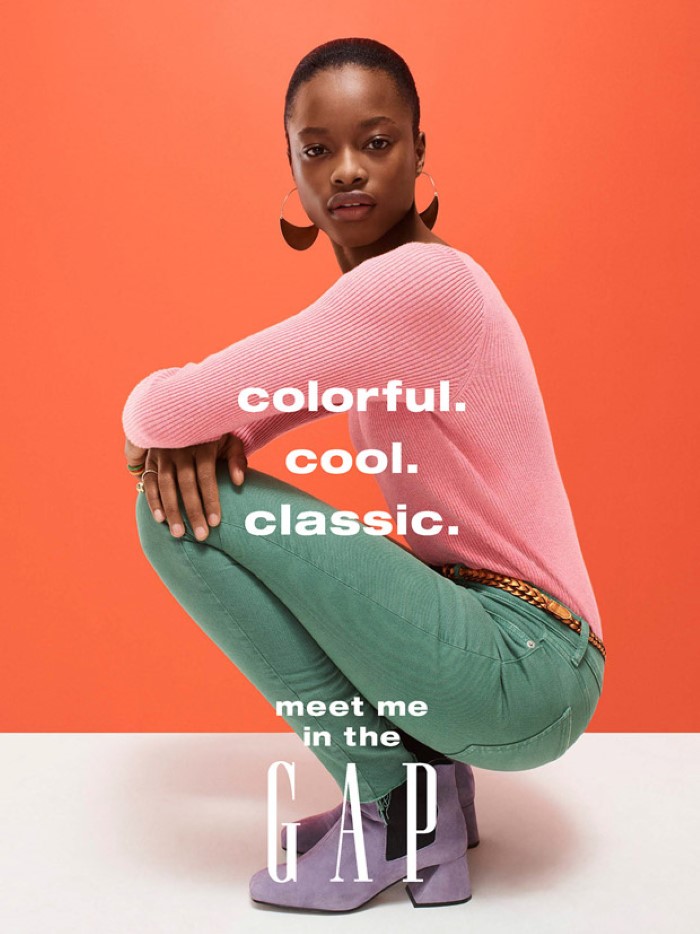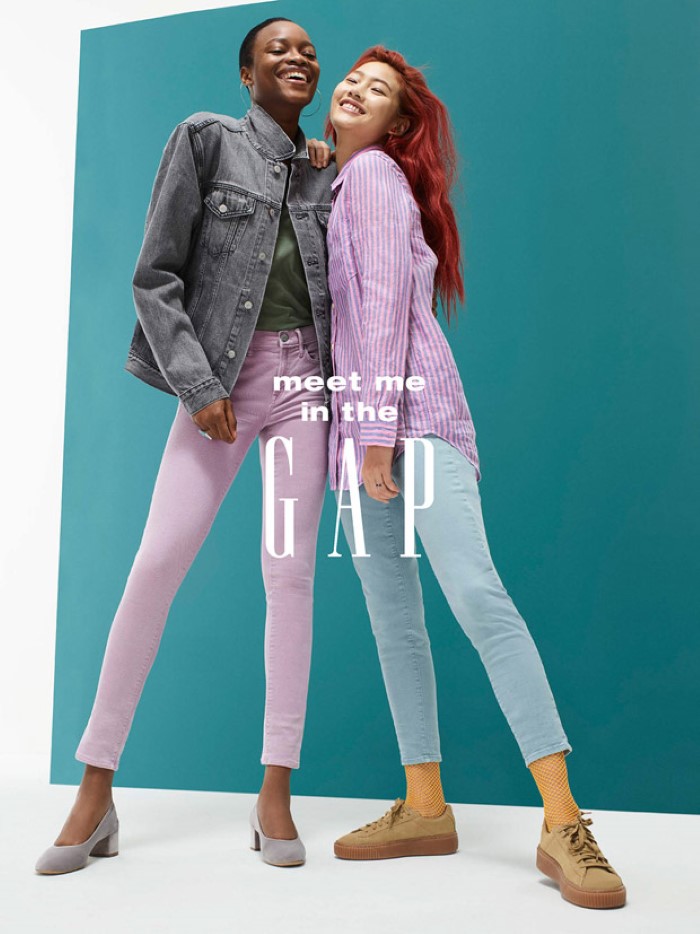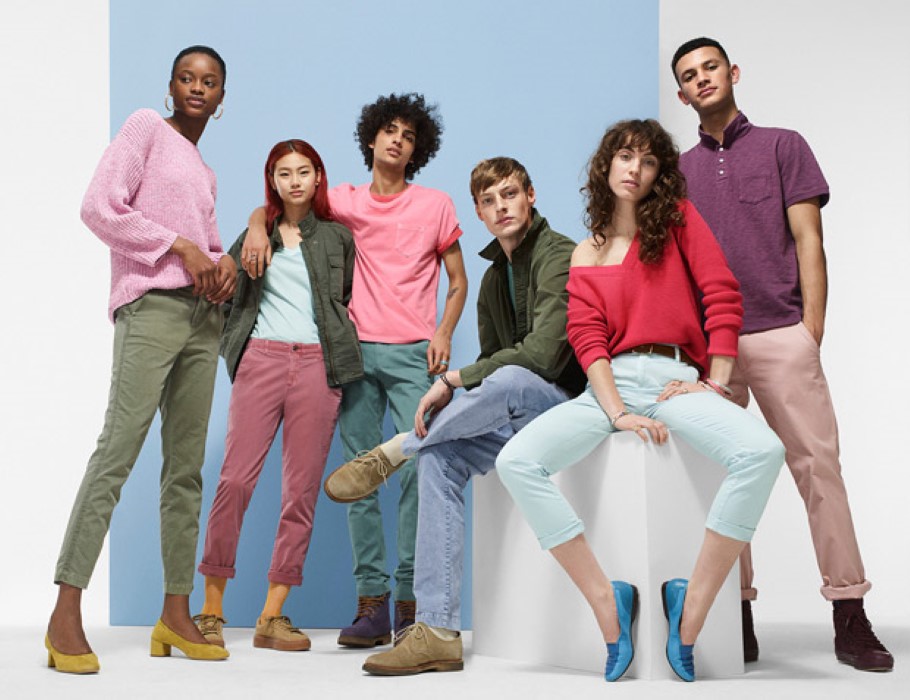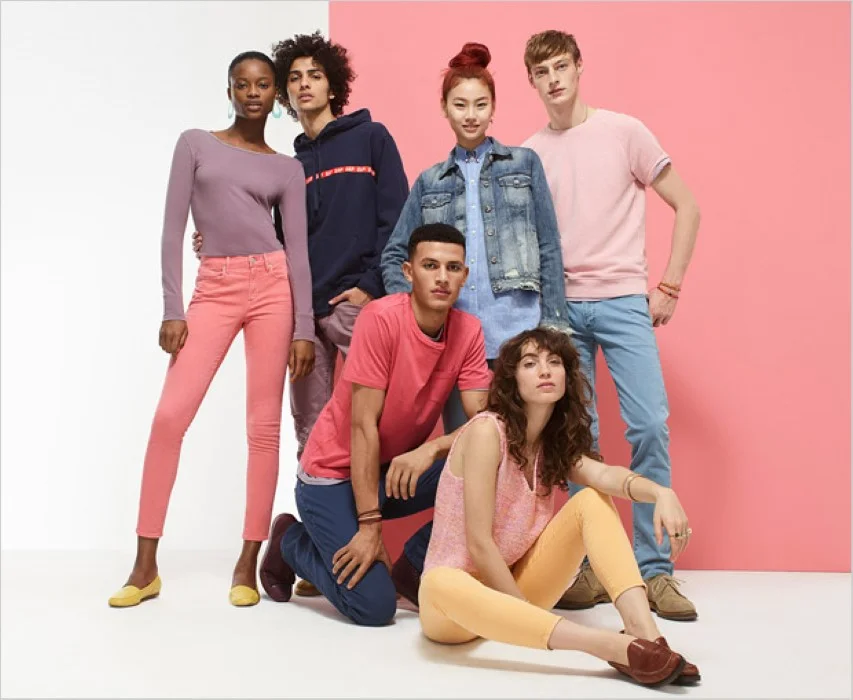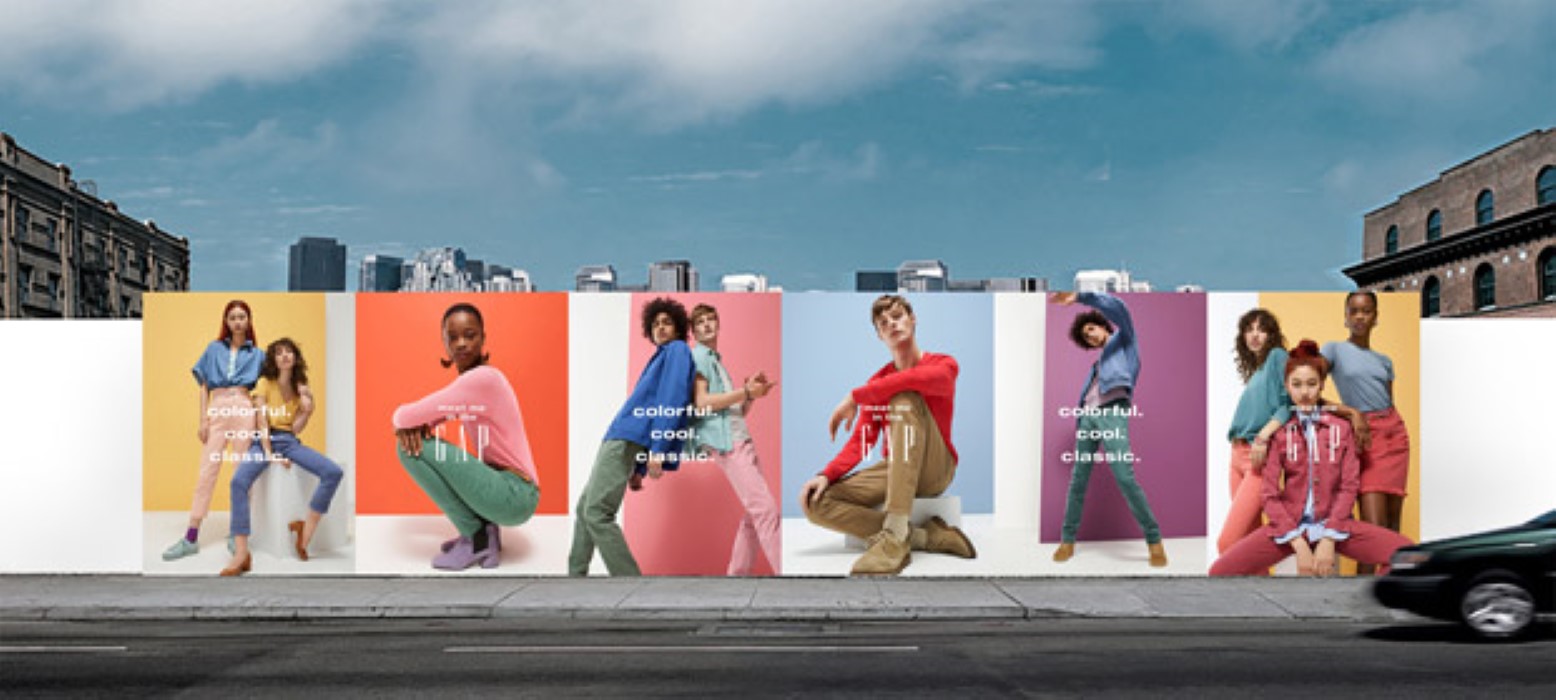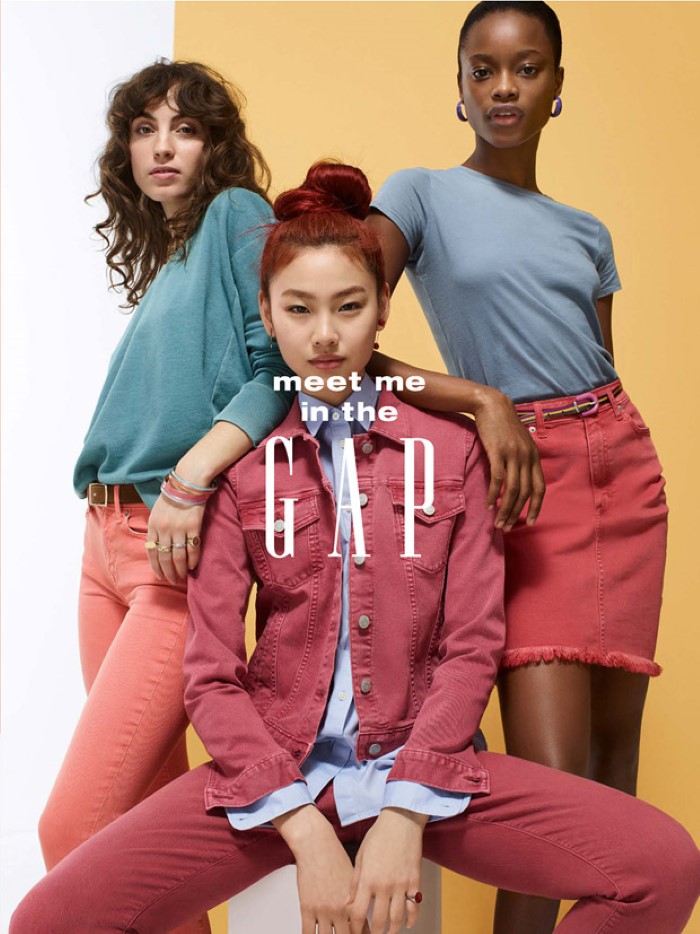Eye: Amy Troost Shoots GAP 2018 SS Ad Campaign | Gap Inc. Study Turns Store Labor Practices Upside Down
/Fashion photographer Amy Troost is in the studio, capturing models Hoyeon Jung, Katerina Tannerbaum, Mayowa Nicholas, Adil Haddaoui, Roberto Sipos, and Tre Samuels for GAP's Spring Summer 2018 campaign, styled by Beth Fenton. / Hair by Tina Outen; makeup by Kanako Takase
Reflecting on the dire problems of an overabundance of American retail stores, I googled the state of GAP, to better understand the financial state of what was once America's hottest brand. The search results were interesting; read more after the images.
GAP Inc. Reconfigures the Mix
To set the record straight, Gap Inc. will continue to close under-performing Gap and Banana Republic stores, with 200 Gap and Banana Republic stores scheduled to close in the next three years.
The company's focus is Old Navy, where expansion plans include opening 60 US stores this year, while remodeling about 150 other Old Navy stores, as a piece of this already announced strategy of adding 270 Old Navy, Athleta GAP Factory and Banana Republic Factory stores over the three-year time period.
"Investing in Old Navy's retail presence is central to our continued growth," said Sonia Syngal, CEO of Old Navy.
Gap Inc. Study Turned Store Labor Practices Upside Down
The trend to closing GAP and Banana Republic stores while expanding lower-price Old Navy and its factory-brand outlets, reflects larger socio-economic trends in America. For the vast number of Gap Inc. shoppers, wages have been stagnant for years and dreams of moving solidly into the middle class are a smokey haze in the sky.
“As goes Middle America, so goes the middle-American mall,” says Wendy Liebmann, CEO of WSL Strategic Retail. The result is the latest wave of retail Darwinism: the classic American shopping emporiums that put downtown Main Streets out of business in the 1960s are now themselves on their way to extinction.
This trend of wage and salary instability, coupled with lack of predictability in even part-time scheduling in retail, are reflected in Gap Inc.'s own labor practices in stores. "The conventional wisdom is that lean, unstable scheduling is inevitable in today's fast-paced, low-profit brick-and-mortar environment," researchers reported in Harvard Business Review.
An astounding study conducted by researchers working with Gap stores just uncovered a major productivity boon, writes Inc.
The 28-store study pitted "control" stores against stores that intentionally provided employees with consistent work schedules. This included:
- Eliminating store managers' ability to cancel a shift on an employee up to two hours before the shift started
- Requiring employee schedules to be posted two weeks in advance (and keeping consistent schedules in general)
- Guaranteeing a core group of employees 20 hours a week
- Setting consistent start and end times for shifts
- Increasing staffing during surge times
The results of the study were jaw-dropping.
The stores that embraced the concept of consistency saw an astounding 7 percent increase in store revenue. A $30,000 investment in labor hours yielded almost $3 million in incremental sales.
The stores also saw theft decrease, and dramatic decreases in time for managers spent on scheduling, and improved stock organization. Better organization meant fewer "false out-of-stocks" (in which employees mistakenly believe they don't have a requested item in the midst of a disorganized stock room). On-time arrival improved among employees because they could catch the same bus on the same schedule, for example.
Trust Erosion & The Fleeting American Dream
America and other countries worldwide are experiencing a severe decrease in trust among our institutions, one not confined to our governing and political institutions. In the 'how low can we go' pattern of business practices, large numbers of retail workers have absolutely no ability to plan their lives, their kids schedules, and their monthly household budgets.
While professional women like Sheryl Sandberg and Ivanka Trump are writing bestselling books telling women how to lean in and create festive post-it notes to stay organized, millions of average American women wake up every morning with an hourly wage job commitment that can be cancelled that day, with two hours notice. However do they manage?
In today's unpredictable retail world, one can't write with confidence that Gap Inc. is charting a new direction in its employee relations, based on previous practices and this new stuedy. But the company took a promising step in early April 2018, announcing a new parental leave benefits expansion, not only for salaried employees but also hourly workers who've worked at least 24 hours a week for the past year. The policy supports all employee families "regardless of how those families are formed" and includes 12 weeks of leave -- six weeks of leave at 100% of pay and six additional weeks at 50% of pay.
Gap Inc.'s blog post reminds workers that the company was the first US retailer to increase minimum wages to $10 in 2015 and the first Fortune 500 company to have pay data independently verified to confirm that women and men are paid equally.
Can GAP's new ad campaign set a new cool-factor that inspires Americans to once again embrace the brand? Economics are driving GAP sales as much as marketing, a reality made more complex by the reality that Old Navy is considered to be more nimble at delivering trend-right merchandise than the mother brand GAP.
As a barometer of how American retail is faring, Gap Inc. brands are a good constellation to watch. One also wonders what the strategy is to compete with a determined Amazon that is only beginning the fight for online apparel dollars, already creating substantial affiliate relationships with New York Magazine's 'The Cut' and shopping portal The Strategist, devoted to shopping.









